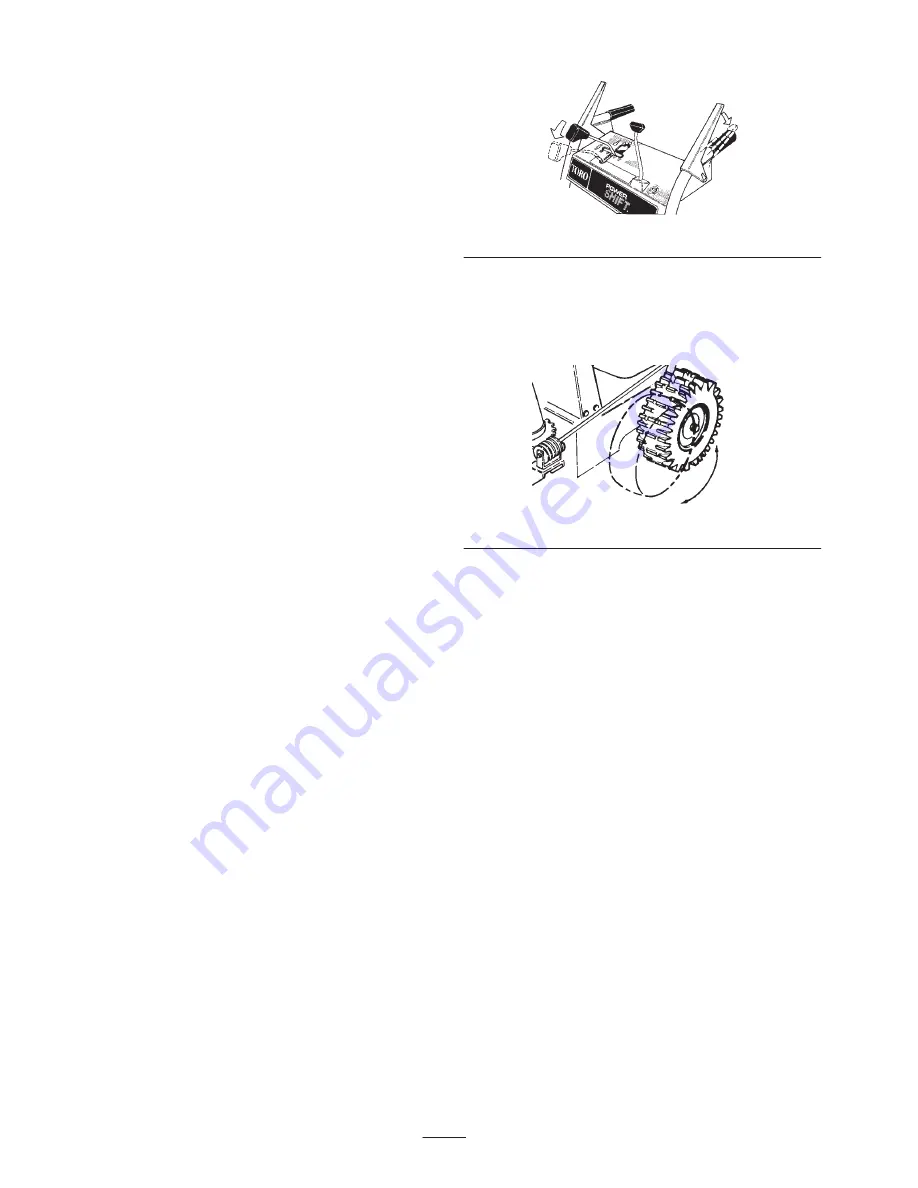
16
Stopping the Engine
1. Engage the auger to clear any remaining snow from
inside the housing.
2. Run the engine for a few minutes to dry off any
accumulated moisture.
3. Release the auger/impeller drive control lever and the
traction control lever (Fig. 13).
4. Shift the traction drive into the N (Neutral) position.
5. Stop the engine by doing one of the following:
A. Move the throttle to the Slow position and remove
the ignition key.
B. Move the throttle to the Stop position.
6. Close the fuel shutoff valve (Fig. 15).
7. Pull the recoil starter with a rapid, continuous, full-arm
stroke 3 or 4 times. This prevents the recoil starter from
freezing up.
8. Wait for all moving parts to stop before leaving the
operating position.
Operating the Power Shift
Feature
Move the wheels to the rear Power Shift position in heavy
or drifted snow. Leave the wheels in the front position for
light snow or for transporting the snowthrower.
With the engine running at full speed:
1. Release the traction control lever (Fig. 13).
2. Move the speed shift control fully forward to the Power
Shift position and hold it there (Fig. 21).
m-4060
Figure 21
3. Fully engage the traction drive lever to move the wheels
into the alternate position (Figs. 21 and 22).
Note: When shifting, you may need to slightly raise the
handle assembly to assist the wheel movement.
179
Figure 22
4. Release the speed shift control.
Note: To shift the wheels manually when the engine is not
running, follow steps 1 and 2 and then lift up on the
handles to unlock the wheels.
Freewheeling or Self-propel
Drive
You can operate the snowthrower with the self-propel
feature engaged or disengaged (freewheeling). When you
insert the axle pins through the outer axle holes and not
through the wheel hubs (Fig. 23), the snowthrower
freewheels. When you insert the axle pins through the holes
in the wheel hubs and the inner axle holes (Fig. 23) and
engage the traction control lever, the snowthrower propels
itself.
Summary of Contents for 824 Power Shift
Page 28: ......













































